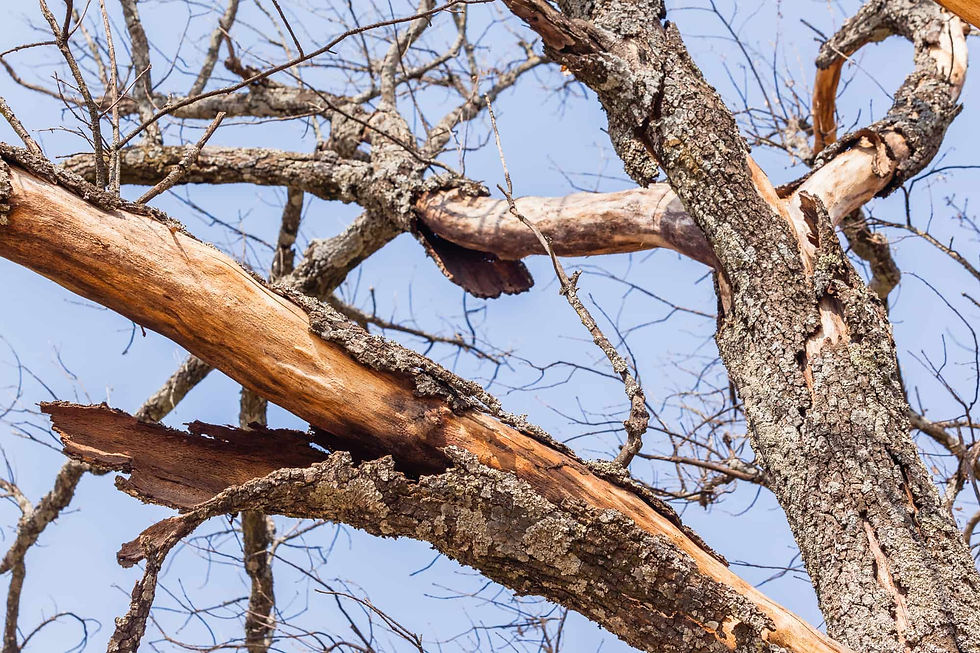Here are some common indicators to look out for:
1. Bark Abnormalities: Keep an eye out for discolored, moist, flaking, or weeping bark, as these can signal tree sickness. The bark acts as a protective layer, and when it fails to perform its function, the tree's overall health may be compromised.

2. Dead and Weak Branches: Drooping, cracking, or dry branches are signs of severe tree damage. Test a branch by snapping it; if it breaks easily and is completely dry, it is likely dead. Having dead or weakened branches poses a safety risk, as they can unexpectedly fall. Immediate removal is recommended, followed by a professional inspection for potential diseases or weaknesses.

3. Wilted or Dying Leaves: Leaves that are wilting, falling, or discolored at the wrong time of year can indicate impending branch death. This suggests that the leaves are not receiving sufficient moisture or nutrients. Wilted, dying, discolored, or damaged leaves can be symptomatic of various issues, including insect infestation or rot.

4. Insect Attacks: Insect attacks pose a significant risk to trees, causing rapid deterioration. A notable presence of insects may indicate that the tree is under serious threat. The Spotted Lanternfly, for instance, can cause sap oozing, wilting, leaf curling, and tree dieback, along with the growth of harmful black sooty mold. The Emerald Ash Borer is another destructive beetle that lays eggs inside tree bark, leading to extensive damage. Termites, attracted to weakened trees, further weaken branches and the tree's structure, increasing vulnerability during storms.

5. Decay and Mold: Excessive moisture, often in muddy or boggy areas, can lead to decay, mold, and rot in trees. Rot must be promptly addressed by removing the affected areas to prevent its spread throughout the tree. Mold on the bark can also indicate internal rot or excessive moisture.

If you notice any of these signs, it is advisable to consult with a professional tree care expert Scarlett Oaks Tree Care can diagnose the tree's condition and recommend appropriate treatments or preventive measures.
Comments